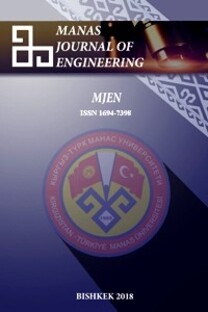Green supplier selection of a textile manufacturer: a hybrid approach based on AHP and VIKOR
Green supplier selection of a textile manufacturer: a hybrid approach based on AHP and VIKOR
___
- [1]. Lu L.Y.Y., Wu C.H., Kuo T.C. “Environmental principles applicable to green supplier evaluation by using multi-objective decision analysis, International Journal of Production Research, 45, (2007), 4317-4331.
- [2]. Lee A.H.I., Kang H.Y., Hsu C.F., Hung H.C. “A green supplier selection model for high-tech industry”, Expert Systems with Applications, 36, (2009), 7917-7927.
- [3]. Tuzkaya G., Özgen A., Özgen D., Tuzkaya U.R., Environmental performance evaluation of suppliers: A hybrid fuzzy multi-criteria decision approach, International Journal of Environmental Science and Technology, 6,(2009), 477-490.
- [4]. Hashemi S.H., Karimi A., Tavana M. “An integrated green supplier selection approach with analytic network process and improved Grey relational analysis”, International Journal of Production Economics, 159,(2015),178–191.
- [5]. Kuo T.C., Hsu C.W. and Li J.Y. “Developing a green supplier selection model by using the DANP with VIKOR”, Sustainability, 7, (2015), 1661–1689.
- [6]. Luthra S., Govindan K., Kannan D., Mangla S.K., Garg C.P. “An integrated framework for sustainable supplier selection and evaluation in supply chains”, Journal of Cleaner Production, 140, (2016), 1686-1698.
- [7]. Song, W., Song, W., Chen, Z., Liu, A., Zhu, Q., Zhao, W., Tsai, S. B., Lu, H. “A Study on Green Supplier Selection in Dynamic Environment”, Sustainability, 10, (2018), 1226-1247.
- [8]. Haeri, S. A. S., Rezaei J. “A grey-based green supplier selection model for uncertain environments”, Journal of Cleaner Production, 221, (2019), 768-784.
- [9]. Chen, K. S., Wang,C. H., Tan K. H. “Developing a fuzzy green supplier selection model using six sigma quality indices”, International Journal of Production Economics, 212, (2019), 1–7.
- [10]. Saaty, T. L. The analytic hierarchy process. New York: McGraw-Hill.1980.
- [11]. Wu, Y., Chen, S. C., Lin, I. C. “Elucidating the impact of critical determinants on purchase decision in virtual reality products by Analytic Hierarchy Process approach”, Virtual Reality, 23, (2019), 187–195.
- [12]. Çelikbilek, Y. “A grey analytic hierarchy process approach to project manager selection”, Journal of Organizational Change Management, 31, (2018), 749- 765.
- [13]. Banda, W. “Economic analysis of Zambia’s ad valorem copper mineral royalty reforms using an analytic hierarchy process framework”, Mineral Economics, 32, (2019), 1–18.
- [14]. Alava, M. V., Figueroa, S. P. D., Alcivar, H. M. B., Vázquez, M. L. “Single Valued Neutrosophic Numbers and Analytic Hierarchy Process for Project Selection”, Neutrosophic Sets and Systems, 21, (2018), 122-130.
- [15]. Ahmad, I., Verma, M. K. ”Application of Analytic Hierarchy Process in Water Resources Planning: A GIS Based Approach in the Identification of Suitable Site for Water Storage”, Water Resources Management, 32, (2018), 5093–5114.
- [16]. Amin Nikkhah A., Firouzi, S., El Haj Assad M., Ghnimi S. “Application of analytic hierarchy process to develop a weighting scheme for life cycle assessment of agricultural production”, Science of the Total Environment, 665, (2019), 538–545.
- [17]. Thaker, H. M. T., Sakaran, K. C. “Prioritisation of key attributes influencing the decision to purchase a residential property in Malaysia: An analytic hierarchy process (AHP) approach”, International Journal of Housing Markets and Analysis, 9, (2016), 446-467.
- [18]. Sahin, T., Ocak, S., Top, M. “Analytic hierarchy process for hospital site selection”, Health Policy and Technology, 8, (2019), 42–50.
- [19]. Akay, O. A., Demir M., Akgul, M. “Assessment of risk factors in forest road design and construction activities with fuzzy analytic hierarchy process approach in Turkey”, Environmental Monitoring and Assessment, 190, (2018), 561-572.
- [20]. Opricovic, S., Tzeng, G.H. ”Compromise Solution by MCDM Methods: A Comparative Analysis of VIKOR and TOPSIS”, European Journal of Operational Research, 156, (2004), 445-455.
- [21]. Aydin, S., Kahraman, C. “Vehicle selection for public transportation using an integrated multi criteria decision making approach: A case of Ankara”, Journal of Intelligent & Fuzzy Systems, 26, (2014), 2467–2481.
- [22]. Beheshtinia, M.A., Omidi, S. “A hybrid MCDM approach for performance evaluationin the banking industry”, Kybernetes, 46, (2017), 1386-1407.
- [23]. Opricovic, S. “Fuzzy VIKOR with an application to water resources planning”, Expert Systems with Applications, 38, (2011). 12983-12990.
- [24]. Joshi, R., Kumar, S. “An intuitionistic fuzzy information measure of order (α, β) with a new approach in supplier selection problems using an extended VIKOR method”, Journal of Applied Mathematics and Computing, 60, (2019), 27–50.
- [25]. Suh Y., Park Y., Kang D. “Evaluating mobile services using integrated weighting approach and fuzzy VIKOR”, PLoS ONE, 14, (2019), e0217786.
- [26]. Narayanamoorthy, S., Geetha, S., Rakkiyappan, R., Joo, Y. H. “Interval-valued intuitionistic hesitant fuzzy entropy based VIKOR method for industrial robots selection”, Expert Systems With Applications, 121, (2019), 28–37.
- [27].Tayyar, N., Arslan, P. “Hazır Giyim Sektöründe En İyi Fason İşletme Seçimi İçin AHP ve VIKOR Yöntemlerinin Kullanılması”, Celal Bayar Üniversitesi Sosyal Bilimler Dergisi, 11, (2013), 340-358.
- ISSN: 1694-7398
- Yayın Aralığı: 2
- Başlangıç: 2001
- Yayıncı: KIRGIZİSTAN-TÜRKİYE MANAS ÜNİVERSİTESİ
Assisting tool for essay grading for Turkish language instructors
Rita Ismailova, Mustafa Alp Çetin
Generalized solution of boundary value problem with an inhomogeneous boundary condition
Elmira Abdyldaeva, Gulbarchyn Taalaibek kyzy, Bermet Аnarkulova
Durdu TOPKARA, Osman TUTKUN, Janarbek IZAKOV, Nurzat SHAYKİEVA
Elmira ABDYLDAEVA, Gulbarchyn Taalaibek KYZY, Bermet NARKULOVA
Finite element analysis of thermal stress of laminated composite plates using Taguchi method
A review study on the using of diethyl ether in diesel engines: effects on smoke and PM emissions
